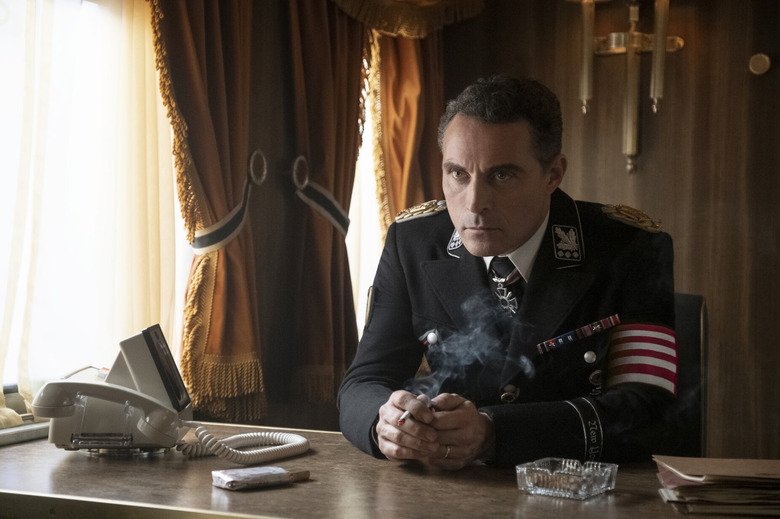This Underrated Prime Video Resistance Drama Is A Must-Watch For Andor Fans
We may receive a commission on purchases made from links.
If Disney+'s Andor hit you as hard as it did me — I've gone as far as calling it one of the best shows of the decade — then allow me to throw a lesser-known streaming pick your way that might just scratch the same dystopian itch. It's not a new release (in fact, it came out a decade ago) but it's an excellent Prime Video drama that way too many people missed the first time around: It's The Man in the High Castle, adapted from the Philip K. Dick novel of the same name. The series imagines an alternate version of history, where the Allies lost World War II and the US ended up split between the Axis powers, and I'd like to make a case for why Andor fans owe it to themselves to check it out.
It's not a particularly flashy show, which probably accounts for why I feel like so many people never heard about it. But for anyone who connected with Andor's grounded tone and its sense of creeping dread, The Man in the High Castle absolutely delivers something just as potent: A dystopian story that presents rebellion not as a burst of action, but as something that evolves through fear, loss, and sacrifice.
Like Andor, this is a show about people trying to live with themselves in the shadow of an empire. Some try to disappear into quiet lives. Others collaborate, while a brave few decide that truth is worth risking everything for, even if it means standing alone.
This year also marks the 10th anniversary of The Man in the High Castle, which was one of Prime Video's early attempts at the kind of prestige TV that would come to define streaming. For what it's worth, the show also is still holding on to solid Rotten Tomatoes critics' and audience scores (84% and 79%, respectively). And the cast includes the always-fantastic Rufus Sewell, who starts out as an SS officer charged with hunting down members of the resistance.
As for the show itself, it's set in a divided post-war America — the Nazis control the East, the Japanese control the West, with a so-called "neutral zone" in between — and it creates a world where propaganda rules and resistance often feels futile (sound familiar, Andor fans?). But then something peculiar happens: A film surfaces that depicts an alternate version of history, one where the Nazis ... lost the war. An alternate history of the alternate history, as it were.
The same way that Andor Season 2 marked a crescendo in the depiction of fascism's machinery — as we saw in the methodical horror of the Ghorman massacre and the use of a false-flag operation to "justify" it — The Man in the High Castle plows similar narrative ground. What's most striking, to me, is how both series treat the truth as something fragile and endangered. In Andor, Sen. Mothma warns that "the loss of an objective reality is perhaps the most dangerous" thing of all. Prime Video's drama takes that one step further.
It imagines what happens when reality itself is replaced by a lie so big, no one dares to question it. Because that lie is backed up by guns, tanks, and mass surveillance.
Over its four seasons, The Man in the High Castle becomes less about alternate history and more about the fragility of truth in any society that's sliding toward authoritarianism (or even already there). It asks what people are willing to tolerate, what they're willing to ignore, and what it takes for someone to finally say they've had enough. And, sad to say, the show still feels as relevant now as it did when Season 1 premiered a decade ago, back in 2015. For any viewers out there drawn to rebellion stories with nuance and something urgent to say — this one is essential viewing.
